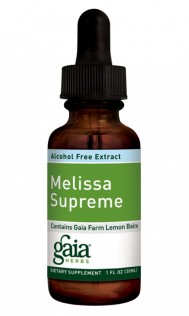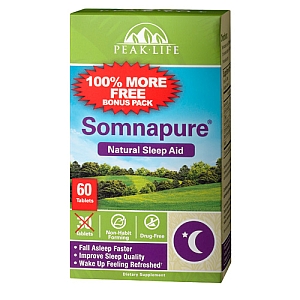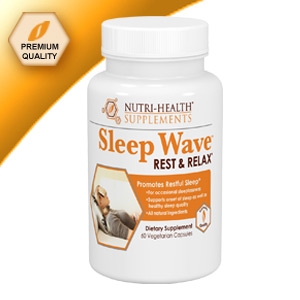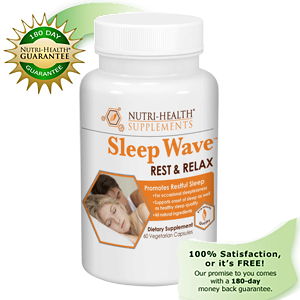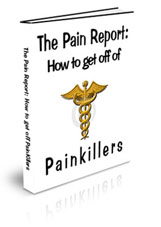Heroin Use On the Rise from Pill Crackdown
In Lancaster, Ohio, Holly Yates started using painkillers in the ninth grade, at parties and hanging out with friends. The pills were everywhere, easy to get and cheap. By the time she was 18, she was abusing oxycodone, Percocet and other pills every day.
Then they stopped being enough.
“My cousin was into heroin and I started hanging out with her,” said Yates, a hazel-eyed 20-year-old. “She told me about it, and I was like, ‘I want to try it.’ The first time that I shot it up, it was like, ‘Where has this been all my life?’”
Experts say Yates and others in this town of about 38,000 southeast of Columbus are on the leading edge of a frightening new drug abuse trend – one that is ironically being fueled by a national crackdown on prescription painkillers. While new regulations and law enforcement efforts have significantly reduced the supply of these drugs, they say, those efforts have inadvertently driven many users to another type of opiate that is cheap, powerful and perhaps even more destructive – heroin.
“It’s an epidemic,” said Dr. Joe Gay, director of the regional addiction and mental health clinic Health Recovery Services, who has studied patterns of drug use in the state.
A flood of cheap heroin from Mexico, which is now one of the leading sources of the drug to the United States, is one reason for the return of the scourge. According to the Justice Department, the drug is showing up in new areas, including upscale suburban towns where heroin was once rare.
In Illinois, for example, researchers at Roosevelt University have found a spike in young suburban heroin abusers. Long Island, New York, has in recent years seen a rash of addiction among the young. A spike in heroin use and related crime has Dane County, Wis., reeling. Even states like Washington, where heroin has a longtime presence, have seen a sharp increase among young users. In King County, home to Seattle, nearly a third of those entering treatment for heroin abuse in 2009 were between ages 18 and 29 — a sharp increase from a decade before.
With increased availability has come a spike in the number of visits to emergency room visits for issues related to heroin use, including a 13 percent increase from 2005 through 2009, according to the national Drug Abuse Warning Network. The highest rates of admission were for young adults, 21 to 24 years old.
“Twenty years ago, half of the heroin addicts in treatment lived in two states — New York and California,” said Gay. “(Now, in Ohio) we’re seeing it spread out of the cities, into the suburbs and into the rural areas.”
The demographics of heroin addiction are also shifting, he said.
‘It’s not going away’
Until a few years ago, addicts were overwhelmingly men who lived in urban areas, many of them from racial minorities. An alarming number of those entering treatment programs in Ohio — a good measure of addiction — are young, he said. Most are white. They are from poor rural counties and wealthy suburbs. Many are girls and women.
In Ohio, the new face of heroin addiction could be the girl or boy next door.
“Everybody does it,” Yates said. “It’s just here, and it’s not going away.”
Sarah Mayer, 27, was an early traveler on the path from dabbling in prescription pills to putting a needle in her arm.
Born and raised in Hilliard, a tree-lined suburb of Columbus, she grew up in what is, by all accounts, a loving home. Her father works at the local bank. Her mother is a nurse.
Derailed plans
In high school, Mayer went to parties and drank occasionally, but she kept her grades up. During her last year in high school, in 2002, she took college classes. After graduation, she started a fully-paid-for nursing program. But her plans were derailed by addiction to oxycodone, an opiate-based painkiller found in many medicine cabinets across the country.
“I really didn’t know what I was getting myself into,” Mayer said. By 2005, she and her boyfriend were taking the pills regularly to get high. But over time, the effects diminished.
One day in early 2006, Sarah and her boyfriend found themselves nearly broke and without the pills they needed. Desperate and sick with withdrawals from the opiates, her boyfriend left the house to try to find pills.
He came back with a bag of powder heroin.
“He knew how I felt about heroin,” Mayer said. “That was the one thing I said I would never do.”
Despite her conviction, within 24 hours, she had snorted it. She would spend another three years chasing that first high. “It was almost like all of the wind was knocked out of my chest, I could barely hold my head anymore,” said Mayer. “It was like my whole body just exhaled.”
Soon, she began injecting it. It would take her years, and at least six trips to recovery programs, before she successfully got clean in October 2009. She’s now working toward a degree in nursing, and recently made the dean’s list.
The addiction was something the Mayer family never saw coming.
“There was never a thought that ever entered my mind that I would ever lose a child through addiction,” said Randy Mayer, Sarah’s father. “Watching this thing grab her and not let go, I mean, it was a horrible time.”
But in Hilliard, where he also grew up, Randy Mayer said he is seeing this happen to others.
“I’ve met some other families, locally here — they’re dealing with the same kind of situation,” he said. “The fact of the matter is, these towns like this are fertile for this to spread.”
Paul Coleman, director at the Maryhaven clinic near Columbus, where Mayer sought treatment, said about a quarter of the nearly 130 adolescents currently getting treatment there have used opiates — something he’s never seen in his 22 years at the center.
“A few years ago if you would have asked me how many young patients I would have using opiates I wouldn’t have said 25 percent,” Coleman said. “I would have said none.”
The White House has called prescription drug abuse the nation’s fastest-growing drug problem. The Centers for Disease Control and Prevention has officially dubbed it an epidemic.
‘Crisis’
In Ohio and elsewhere, however, the beast has two heads. Opiate abuse, which includes both prescription painkillers and heroin, has become a “crisis of unparalleled proportions,” according to Ohio’s Department of Alcohol and Drug Addiction Services. In 2001, just eight of Ohio’s 88 counties reported a significant number of patients were entering substance abuse treatment for opiate addiction. By the same measure, 85 of Ohio’s 88 counties reported an opiate problem in 2009.
The state has taken action. In 2006, it implemented a system to track prescriptions to help prevent so called “doctor shopping,” where addicts move from one physician to the next looking for prescriptions. Last year, it also passed a law to help fight “pill mills,” unscrupulous storefront clinics known for readily dispensing prescriptions.
Similar measures have been taken across the nation. Combined with new pill formulations that make the medication harder to crush up to snort or shoot, the efforts have curbed supply and abuse. Experts agree this is a positive step. But in Ohio, the crackdown has had unexpected consequences.
The pills have become expensive, and often hard to obtain. Prescription opiates now sell for anywhere from $30 to $80 dollars a pill. A $10 bag of heroin offers a similar or better high. Unable to find pills, or afford them, addicts go looking for something else to feed the craving. Heroin is cheap, plentiful and potent.
It is also deadly. In fact, the state saw a record number of heroin-related deaths in 2010, which now account for one in every five overdose deaths in the state. Cuyahoga County, home to Cleveland, recorded 106 heroin-related deaths in 2011 — an increase of nearly 180 percent since 2003, according to the Cuyahoga County Medical Examiner’s Office. In early May, Loraine County, Ohio, saw five fatal overdoses in 10 days due to a batch of highly potent, or badly cut, heroin. Experts worry other counties may soon follow suit, and that those dying might be among what the Ohio Department of Alcohol & Drug Addiction Services reports show is the fastest growing demographic of heroin users — young people between ages 20 and 35.
It’s an addiction that surprises even those who find themselves in its grip.
“If you were to tell me that I was going to use heroin … the same week in which I used it, I probably would have laughed in your face,” said Tej Yaich, a 20-year-old from Pickerington, Ohio. “That’s something that I would never have done.”
For Yaich, who has been sober for more than a year, addiction started at home. His parents had prescriptions sitting unused in the medicine cabinet. Yaich said he was 15 when he first tried them, crushing them up at night so his parents wouldn’t hear the noise. The experiment became a habit. Then the supply started to dry up.
“One day I went to call my guy that was selling to me and he said he didn’t have pills at that time, but he had something equally as good,” said Yaich. “He said, ‘You’ll like it.’”
What the dealer had was heroin, and he was right. Yaich started by snorting it, then quickly moved on to shooting up. From one bag, he worked himself up to two, then five. At the height of his addiction, he said, he injected up to 25 bags a day.
Yaich’s story is typical of those that Dr. Steven Matson hears from young people coming into his clinic at Nationwide Children’s Hospital in Columbus. Matson, who helped Yaich recover, runs a program there that uses a fairly new medication called buprenorphine, a semi-synthetic opioid that when used correctly helps to curb cravings to assist in recovery.
When Matson started this work three years ago, the young people coming into his clinic were “fringe,” he said. Now they are as often from upscale suburbs of Columbus as from poorer, more rural areas.
“Because of the availability of these drugs now, it is not an usual story that we hear, ‘I went to a party, some friends there were doing heroin, so I shot up,’” he said. “It seems like madness that you would go to a party and never have used anything and then use heroin. But that’s what’s happening with some children.”
Matson’s program also helped Holly Yates recover. She’s been sober since Thanksgiving Day 2010. For more than a year, she’s held a job as a stylist at a local hair salon. She saved up to buy herself a silver Honda Accord. In the back seat are two car seats for her young nephews, who her older brothers now trust her to babysit.
But things can be lonely in Lancaster, where she says nearly everyone her age uses drugs, and many are hooked on heroin.
“It’s just hard being young and staying clean,” Yates said. “I mean this town, it’s just, like, that’s all that’s here.”
“I just want kids my age to know that you don’t have to keep using,” she added. “You can be clean, and you can have a better life.”

